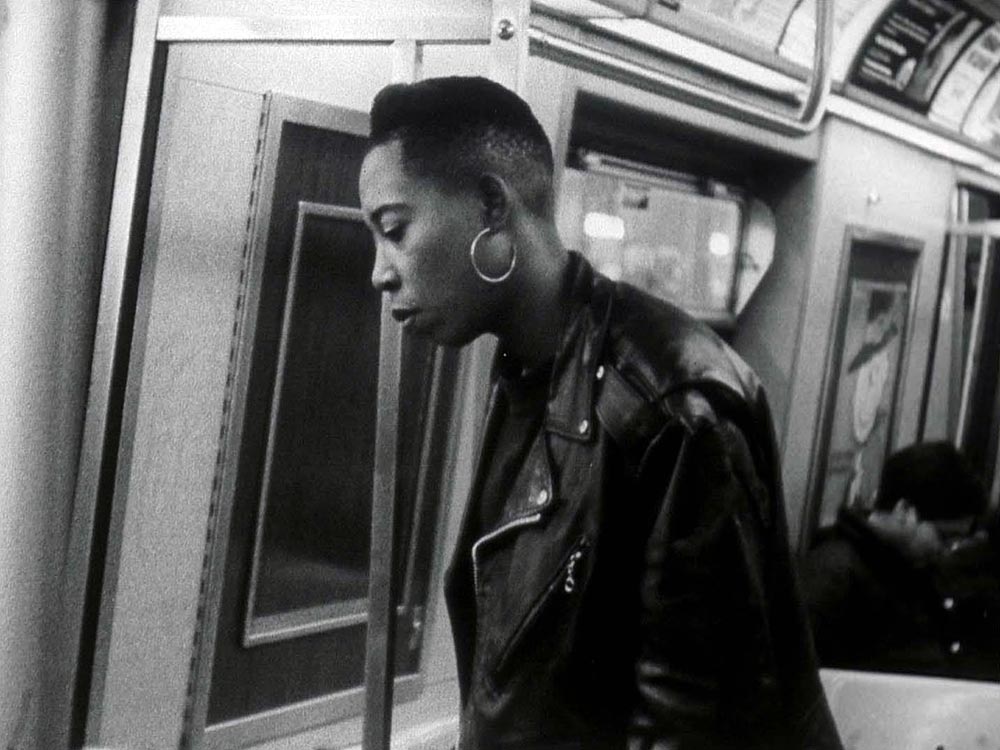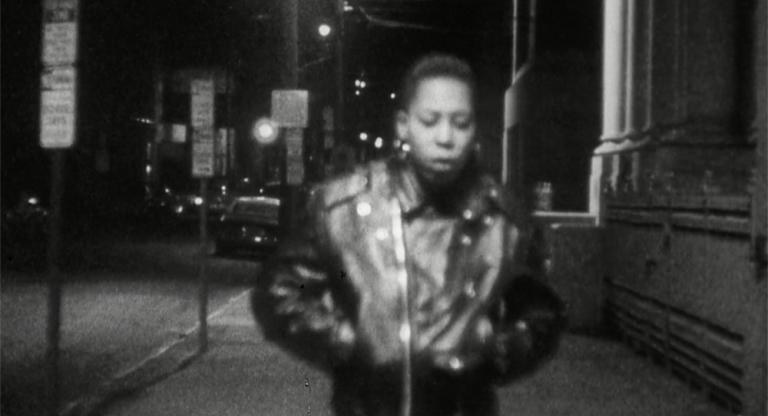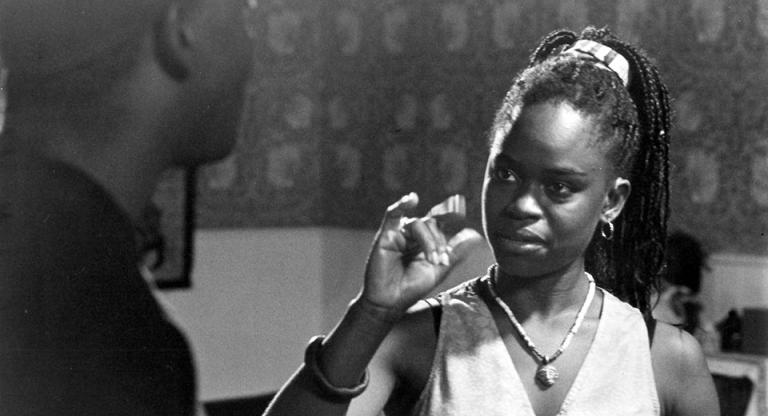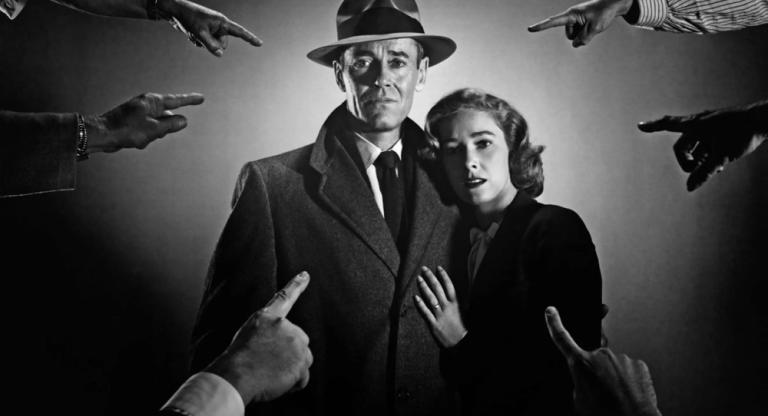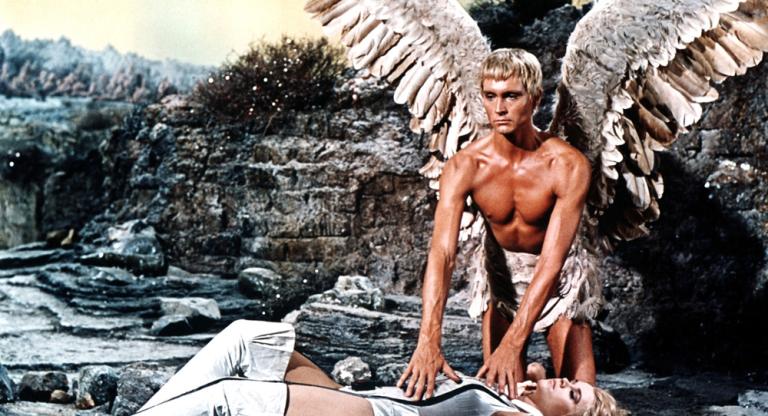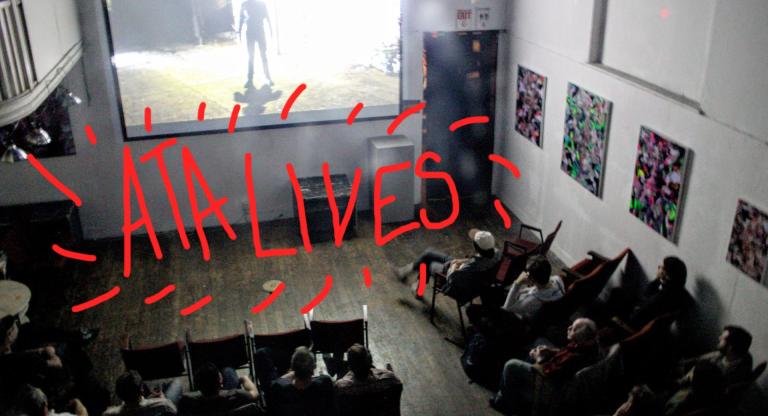For the “Under the Influence” series at the Maysles Documentary Center, I was invited to share two experimental films that have influenced and shaped both my artistic and scholarly practices. I chose Camille Billops’s A String of Pearls (2000) and Dawn Suggs’s short Chasing the Moon (1989). A String of Pearls marks the conclusion of Billops’s family trilogy that includes the docu-fantasies of Suzanne, Suzanne (1982) and Finding Christa (1991), this time focusing on the men in her family set against the backdrop of gun violence in America. Chasing the Moon is a black-and-white experimental mediation on intimate partner violence amidst the tension of recurring memories and a woman walking alone at night.
Across Black feminist experimental film and video, we see artists deploy embodied ways of aestheticizing the experimental that emancipate it from being solely understood through the disembodied white masculine traits by which we come to know the genre. Black feminist film and video-makers deploy an arsenal of aesthetics that pull from cultural, lived experiences to reshape image-making. They are less interested in the representational politics of film and video.
These artists have historically provided networks of support and community to one another. This can be seen in the L.A. Rebellion assembly of Black film- and video-makers from UCLA’s graduate Film and Television program and in Third World Newsreel’s production program in New York, in which Dawn Suggs was a participant in the early 1990s. Earlier this week, I interviewed Suggs about her practice, influences (from Camille Billops to Andy Warhol), and the context of the blues that informs and shapes the film grammar of Chasing the Moon.
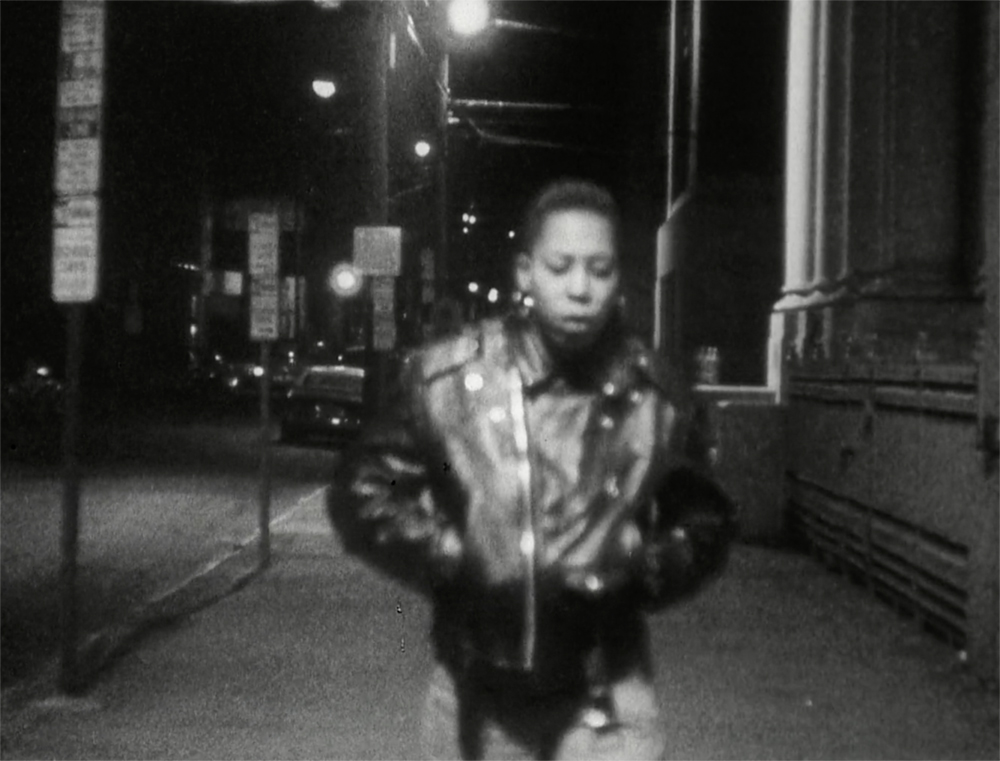
Ayanna Dozier: Can you describe your relationship with film and what your influences were?
Dawn Suggs: I moved to New York and started working with 8mm film. I loved that, I felt that I could do that for days at a time. I really loved all the tactile aspects of it. It’s so funny because I came along just as [there arose] this commercial, independent film scene [from which Spike Lee and others were emerging], and people were attracted to it, not necessarily through the arts but through what they knew about popular culture, which I think was a very different type of trajectory than coming to it as an art form.
I feel really lucky because I was able to indulge myself with it as an art form. And then, when I went to grad school, it was clear that independent film could make a lot of money, so the race was on. I think it was so nice to have another type of frame of reference for it in those very early years that I became interested in it. And you know Camille Billops was someone who compelled and inspired me. I might have seen her early on because the Whitney [at its previous location at 75th and Madison] was close to where my father had an art gallery in the Upper East Side.
AD: What was the name of that gallery?
DS: Alexander-Suggs Gallery of African Art [1970–89]. But he was also one of the founders of the Center for African Art [now the Museum of African Art in New York City]. So I grew up going to the Whitney, and then when I went to boarding school I had friends who lived in New York so [the Whitney’s film and video program, the New American Filmmakers Series] was always a part of my life. I remember seeing films [there] by myself and thinking, “Oh shit! They can do this?!” I was so drawn to that because I always liked experimental films and art films.
I was fortunate to have parents that were compelled by world cinema. I remember so many images, like in Fellini films. Visual language stuck with me, and I grew up with African art around me. A multidisciplinary visual artist, Oliver Lee Jackson, was a very good friend of my father, who collected his work. I grew up in that environment. I was always looking and responding to images from different types of art, and [it was] really good art.
AD: Can you say more about your relationship with Billops’s work?
When I saw Camille Billops’s work, I had already been interested in images and filmmaking. But my brother was into it before me. He was really into Andy Warhol. He actually met him briefly. And we would just laugh at the conceit of [Warhol’s] films. We thought that was so funny as teenagers, the stuff that he would do, like film a stationary object for hours. And then my brother started making [film]. I don’t remember at what point I came across Maya Deren. I was interested in postcolonial studies and feminism. So I started seeing a lot of the films that came along at my time that were very popular [around those topics], like Chantal Akerman’s and other works. And then, when I saw Camille Billops, I was like, “Oh wait!” You know, Black folks—and women in particular—we can talk about this really hard stuff in film.
AD: —with a very clear experimental structure to it in our film practice.
DS: Exactly.
AD: I’m working on the manuscript for Billops’s body of work, and her relationship with the Whitney is extensive. At the time, the Whitney was one of the few institutions that had the equipment for film and video programming and exhibitions that extended to their long-running New American Filmmaker Series, in which her film work was heavily favored. In Billops’s archives, she talked extensively about raiding the museum during their artist openings that she affectively called “Negro Nights,” where she would invite all the Black folk she knew (that were not on the guest list) to the museum’s openings. It is an institution at which a lot of varied histories of film and video programming converge (including Chrissie Illes ongoing work in building the Whitney’s film and video art catalog).
DS: Right. I remember the impact [Billops] had on me, specifically Suzanne, Suzanne (1982)—Finding Christa (1991) in a different way. And I turned a lot of my friends onto it, and they hadn’t heard of her. And that was really it for me; seeing her work gave me permission to do the work that I wanted to do. That was before I went to UCLA. When I came back to New York, I went to Third World Newsreel and Women Make Movies, and I met Michelle Parkerson. Initially, everyone was really welcoming. I became interested in film as an undergraduate, and I had a senior when I was a freshman say that I really needed to know how to operate film equipment and the projector, and “This will be your job.” I was like, “Oh my God, what is this?!” But what I did not understand—what I do now—is that she was trying to pass on the tradition and the skills. At that point I had no idea what I was going to study. I was interested in poetry.
But I remember her, Zeinabu irene Davis, and she was so extraordinary and very driven. Another Black woman filmmaker at Brown, Kristi Hart, cast me as the lead in a short film called Bluest Eye, a meditation on Toni Morrison’s novel. She was also an inspiration. And I realized that there are these people who have access to making films and videos and I’ve been so kindly welcomed to be a part of that community. And Davis was like, “Dawn, you got to do this, because I’m out of here.” She, Michelle, and Ada Gay Griffin were so kind and took me under their wing, which included me working on Parkerson and Griffin’s doc on Audre Lorde, A Litany for Survival (1995).
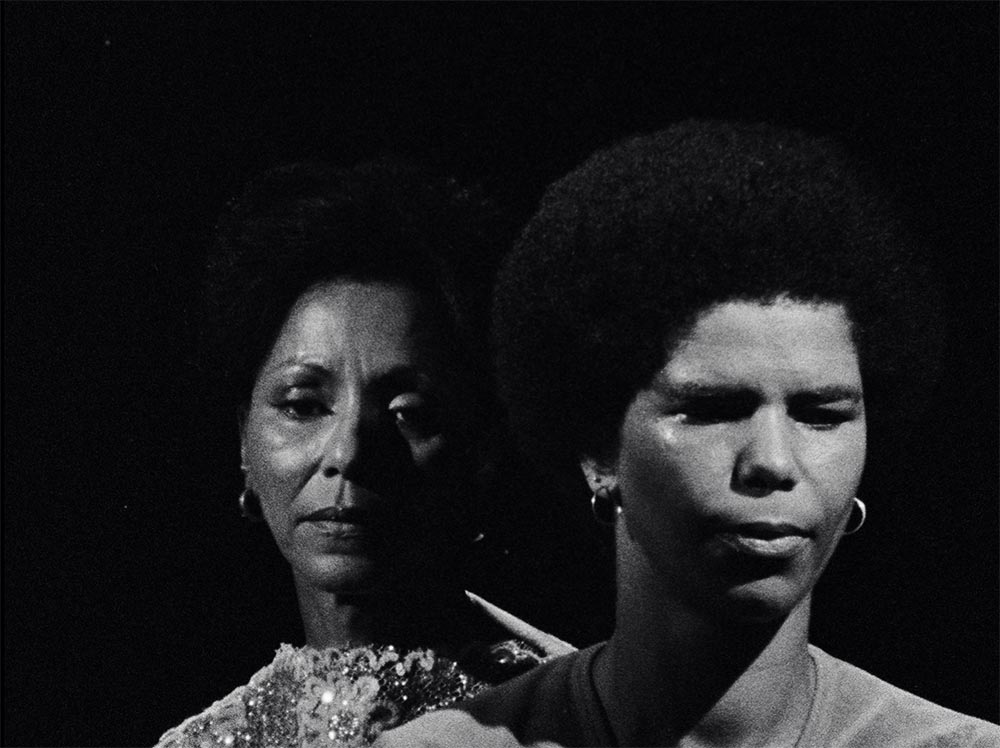
AD: You went to UCLA for your MFA following the visibility of the L.A. Rebellion. Was their films/artist roster a factor in your decision?
DS: Oh yeah! Before I went to UCLA, I knew a little bit about it and I remember being exposed to Barbara McCullough’s work. I can’t remember if I pursued it on my own, but there was a community of filmmakers and artists and Black hippies and people who were transgressive in certain ways that you could hook into [for arts and culture]. I think things were more affected by the fact that all of a sudden there were these breakthrough and crossover films that were making it, so everyone was trying to make that next film, and things really changed around that.
AD: Zeinabu irene Davis is often considered the last of the second group of filmmakers to be affiliated directly with the L.A. Rebellion. Cauleen Smith came a bit after Davis left in the 1990s. Did your paths ever cross while you were at UCLA?
DS: Yes, I know Cauleen. I was at UCLA when she came there. I think we found out about each other through the work [and through the festival circuit]. She wasn’t identifying as queer, but she had work that was being screened at experimental and gay and lesbian film festivals. So we somehow knew each other before she came to UCLA.
AD: I came across your work through distributor Roselly Torres-Rosas while doing archival research at Third World Newsreel and from seeing your name on credits of other films from filmmakers who came through that program like Kym Ragusa. At the same time, though, Arthur Jafa contributed to the preservation of your short, Chasing the Moon (1989) and began screening it as part of his “Affective Proximity” program.
DS: Oh my God! Jafa single-handedly—that’s the reason my work got any attention [recently], because he saw Chasing and encouraged Greg Tate, who was a friend, to write about it. He was just like, “Do you know what you did with this damn film?” I just saw [Chasing the Moon] in a very personal way. It was a time where I felt that film language was not expressing my experience or [that of] a lot of women, other African American women, that I knew. And that was the challenge: how do you really make it talk about these experiences? What type of film grammar can we use to make it express who we are, and not just identifying with someone else’s way of being interested in experimental film? And I remember the way that Kenneth Anger and queer experimental film had an impact on me, and really loving it and feeling intrigued, but not necessarily feeling like I was seeing myself in it. And that’s where Camille came along in a very visceral way.
AD: Chasing the Moon is a very affective short that works through the mnemonic as a way to work through film’s aesthetics. What was your process of working with the film grammar to draw out a more embodied way of filmmaking that deals with the sensitivity of the content (trauma and sexual assault) in the film? And what was your expectation of how audiences would respond/relate to it?
DS: There was a sort of a blues that I experienced that I felt [in] many of the women that I became close with—from girlfriends to other women that I met in New York at that time in my life. Every one of them had a story, and so many were struggling with two things specifically: substance abuse and sexual abuse and violence. I felt those things were really impacting the lives of other Black women I met at the time. I was really compelled after college to meet other Black women and really dive into that subculture. There was a type of blues; it’s hard for me to name it. From how I was brought up and being from the Midwest—you just did not talk about how you were feeling. You internalized your struggles and dealt with them privately. There was so much going on in my heart and my mind.
And fortunately, I had a family who were very involved in the arts. My mother performed and was a storyteller.
In Chasing, I sought a bold film vernacular. For instance, using close-ups of Black female hands to explore agency: hands as intimate weapons, the means for doing harm to someone close, or to oneself; a means for escape; deadly or prolific; a means for producing a stark film by and about Black women. Filming Black leather against a Black woman’s body, the protagonist’s, created a pleasing, rousing aesthetic to be enjoyed by the actor, the subject, perhaps her female lover, their community, but the leather jacket also signified a protective layer needed against the outside world, on the subway, in the streets, and [among] some audiences. My brother got really involved in punk rock and spent some time in London and was always on the edge and looking for the avant-garde. We lost him in 2012. I can no longer talk to him about it. I was from a family that was off beat in St. Louis and my sister and I were really influenced by how he expressed himself as an outsider through queer communities. And so when I started to think about my experiences, especially in predominantly white schools, despite my intersections [with] various Black communities around St. Louis and New York—that was another layer while growing up. We were used to internalizing how we thought about race, gender, class, and sexuality. As we got older, I continued to feel that I could not dialogue with anyone about these things at that point in my life. I made a film as an undergrad about a Black girl at a predominantly white school who just loses it, and I think that film conveyed what it was like to exist in that environment, but I feel that Chasing the Moon was my scream.
And that scream was enabled and shaped by the stories of the women I was meeting and coming into contact with. This has to do with the scene that I was a part of. I was somewhat of a club kid, and there was this world that you could escape to, and escapism was a really big thing. And I wondered why so many of the women I was coming into contact with were struggling with addiction and trauma—what was that pain that we were trying to heal? Some of it was just being Black women in a world, a society that was pretty much dead set against us. But there was also the very personal, familial relationships and [relationships] with partners, male and female, that added layers to that pain. There was just a part of me that wanted to pierce through all of that and convey the feeling of what it felt like to have this pain that you didn’t know what to do with or know where to put.
The most gratifying thing when I made that film was to see other Black women in the audience respond to it and to come up to me and say, “You captured something for me.” It was a type of exposure that I don’t think we were used to seeing.
AD: Another thing that strikes me in Chasing the Moon is the use of house music as the soundtrack. It’s the only thing that is stable and constant in the film, the lone drone of house music. It makes me think of my own relationship with it and where I go to experience it. Those sites end up being different spaces of belonging, safety and negotiating visibility.
DS: Absolutely! That was the big escape. At the time, there was a really strong queer scene in New York. If you had been kicked out and there was no place for you to get support from your family, if you were transgender, gay, or just different, parts of New York, largely downtown, seemed to offer some refuge. So that was a world that I was in touch with, and I was fortunate because I had a brother who knew the club scene and got involved in the ballroom scene and was one of the first to write about the ball scene for The Village Voice. And then Jeanne Livingston made Paris Is Burning (1989). It was like church for us, and then some of us would peel off afterwards and go to church. [laughs] And we would sit there and talk about the contradictions of us re-exploring Christianity. But you would go to church on Saturday night and Thursday night [in the clubs], which was the big night, and you would dance until you entered another state of being. And I think that for so many of us who felt like we did not belong anywhere, this ability to have a communal experience and feel that you were affirmed was important.
It was a time though when so many of us were living on the edge. A lot of us were not living easy lives, and even the idea of a woman walking down the street at night is so full of tension—who is out there after hours, and where is her safety?
AD: Chasing the Moon speaks to the ways we negotiate care and community for one another while living on the edge.
DS: It’s intended to embody the pain and release.
Chasing the Moon will screen tonight at Maysles Cinema, alongside Camille Billops and James Hatch’s A String of Pearls (2002), introduced by Ayanna Dozier, as part of the series “Under the Influence.”
